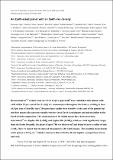| dc.contributor.author | Pepe, Francesco | |
| dc.contributor.author | Cameron, Andrew Collier | |
| dc.contributor.author | Latham, David Winslow | |
| dc.contributor.author | Molinari, Emilio | |
| dc.contributor.author | Udry, Stéphane | |
| dc.contributor.author | Bonomo, Aldo S. | |
| dc.contributor.author | Buchhave, Lars A. | |
| dc.contributor.author | Charbonneau, David | |
| dc.contributor.author | Cosentino, Rosario | |
| dc.contributor.author | Dressing, Courtney | |
| dc.contributor.author | Dumusque, Xavier | |
| dc.contributor.author | Figueira, Pedro | |
| dc.contributor.author | Fiorenzano, Aldo F. M. | |
| dc.contributor.author | Gettel, Sara | |
| dc.contributor.author | Harutyunyan, Avet | |
| dc.contributor.author | Haywood, Raphaelle D. | |
| dc.contributor.author | Horne, Keith | |
| dc.contributor.author | Lopez-Morales, Mercedes | |
| dc.contributor.author | Lovis, Christophe | |
| dc.contributor.author | Malavolta, Luca | |
| dc.contributor.author | Mayor, Michel | |
| dc.contributor.author | Micela, Giusi | |
| dc.contributor.author | Motalebi, Fatemeh | |
| dc.contributor.author | Nascimbeni, Valerio | |
| dc.contributor.author | Phillips, David F. | |
| dc.contributor.author | Piotto, Giampaolo | |
| dc.contributor.author | Pollacco, Don | |
| dc.contributor.author | Queloz, Didier | |
| dc.contributor.author | Rice, Ken | |
| dc.contributor.author | Sasselov, Dimitar D. | |
| dc.contributor.author | Ségransan, Damien | |
| dc.contributor.author | Sozzetti, Alessandro | |
| dc.contributor.author | Szentgyorgyi, Andrew H. | |
| dc.contributor.author | Watson, Christopher A. | |
| dc.date.accessioned | 2017-01-17T17:33:32Z | |
| dc.date.issued | 2013 | |
| dc.identifier.citation | Pepe, Francesco, Andrew Collier Cameron, David W. Latham, Emilio Molinari, Stéphane Udry, Aldo S. Bonomo, Lars A. Buchhave, et al. 2013. An Earth-Sized Planet with an Earth-Like Density. Nature 503 (7476) (October 30): 377–380. doi:10.1038/nature12768. | en_US |
| dc.identifier.issn | 0028-0836 | en_US |
| dc.identifier.uri | http://nrs.harvard.edu/urn-3:HUL.InstRepos:29990221 | |
| dc.description.abstract | Recent analyses1–4 of data from the NASA Kepler spacecraft5 have established that planets with radii within 25 per cent of Earth’s (R⊕) are commonplace throughout the Galaxy, orbiting at least 16.5 per cent of Sun-like stars1. Because these studies were sensitive to the sizes of the planets but not their masses, the question remains whether these Earth-sized planets are indeed similar to the Earth in bulk composition. The smallest planets for which masses have been accurately determined6,7 are Kepler-10b (1.42R⊕) and Kepler-36b (1.49R⊕), which are both significantly larger than the Earth. Recently, the planet Kepler-78b was discovered8 and found to have a radius of only 1.16R⊕. Here we report that the mass of this planet is 1.86 Earth masses. The resulting mean density of the planet is 5.57 g cm−3, which is similar to that of the Earth and implies a composition of iron and rock. | en_US |
| dc.description.sponsorship | Astronomy | en_US |
| dc.language.iso | en_US | en_US |
| dc.publisher | Springer Nature | en_US |
| dc.relation.isversionof | doi:10.1038/nature12768 | en_US |
| dc.relation.hasversion | https://arxiv.org/pdf/1310.7987.pdf | en_US |
| dash.license | OAP | |
| dc.title | An Earth-sized planet with an Earth-like density | en_US |
| dc.type | Journal Article | en_US |
| dc.description.version | Accepted Manuscript | en_US |
| dc.relation.journal | Nature | en_US |
| dash.depositing.author | Charbonneau, David | |
| dc.date.available | 2017-01-17T17:33:32Z | |
| dc.identifier.doi | 10.1038/nature12768 | * |
| dash.authorsordered | false | |
| dash.identifier.orcid | 0000-0001-8189-0233 | en_US |
| dash.contributor.affiliated | Dressing, Courtney Danielle | |
| dash.contributor.affiliated | Haywood, Raphaelle | |
| dash.contributor.affiliated | Phillips, David | |
| dash.contributor.affiliated | Szentgyorgyi, Andrew | |
| dash.contributor.affiliated | Sasselov, Dimitar | |
| dash.contributor.affiliated | Latham, David | |
| dash.contributor.affiliated | Charbonneau, David | |
| dc.identifier.orcid | 0000-0001-8189-0233 | |


